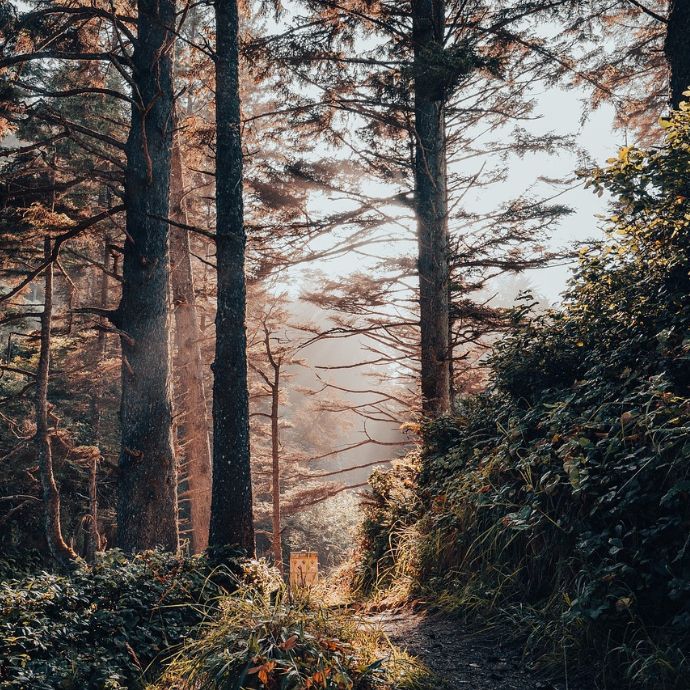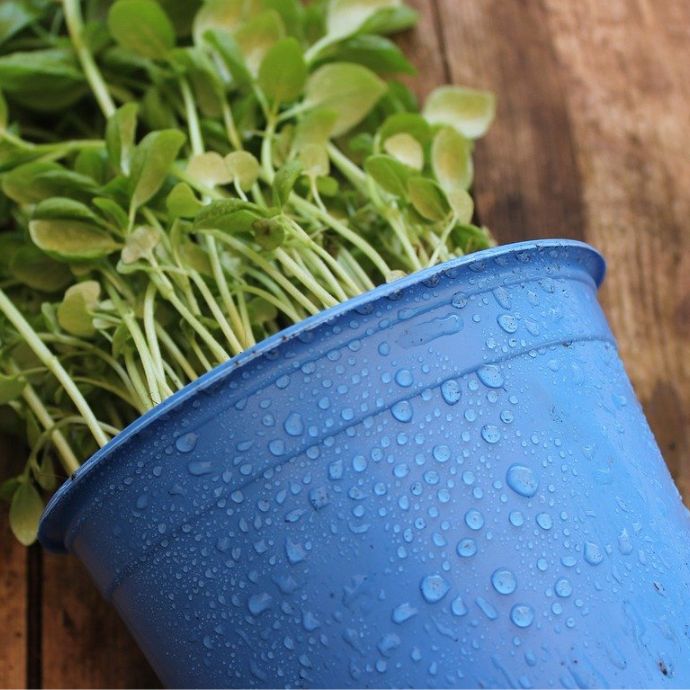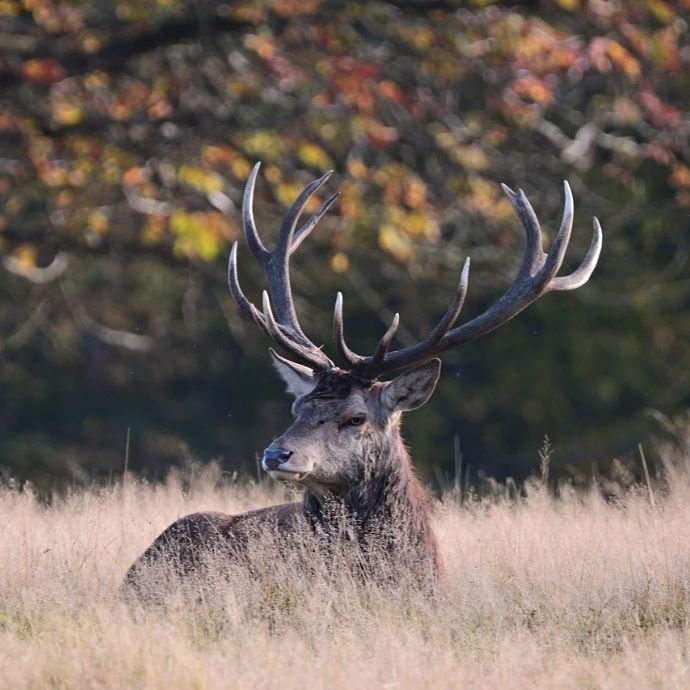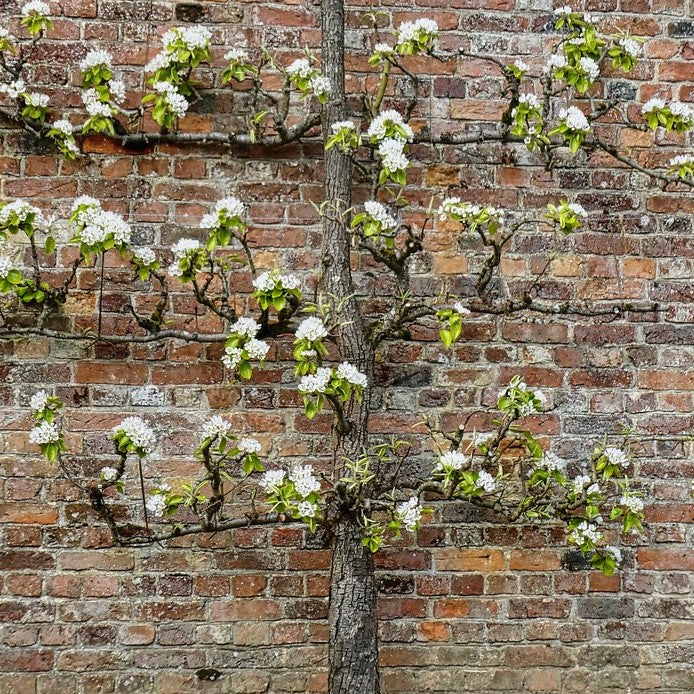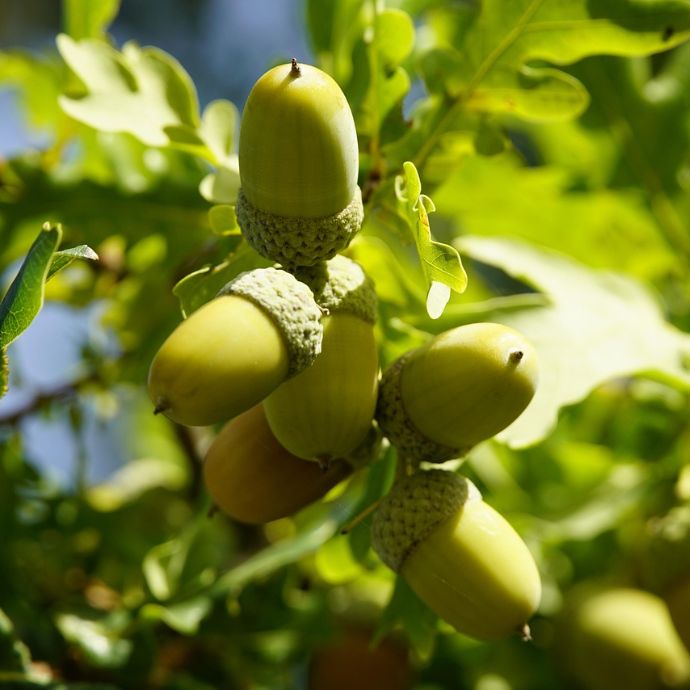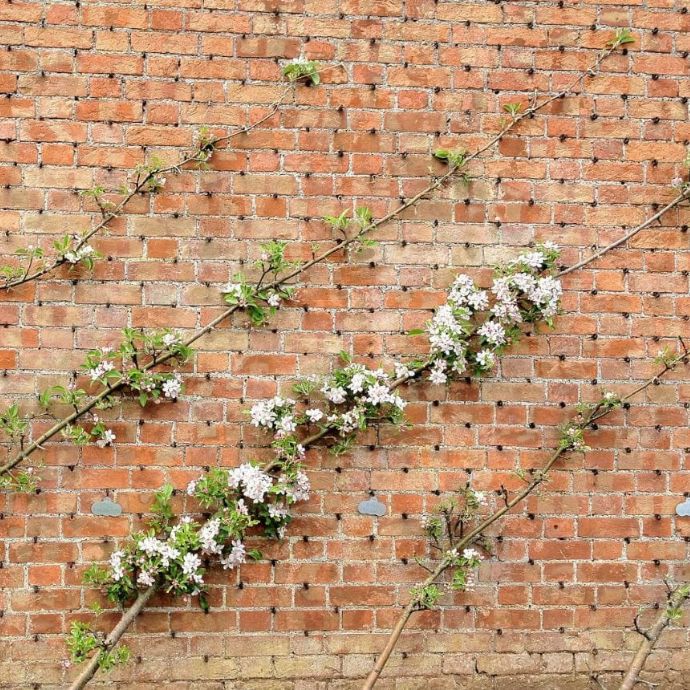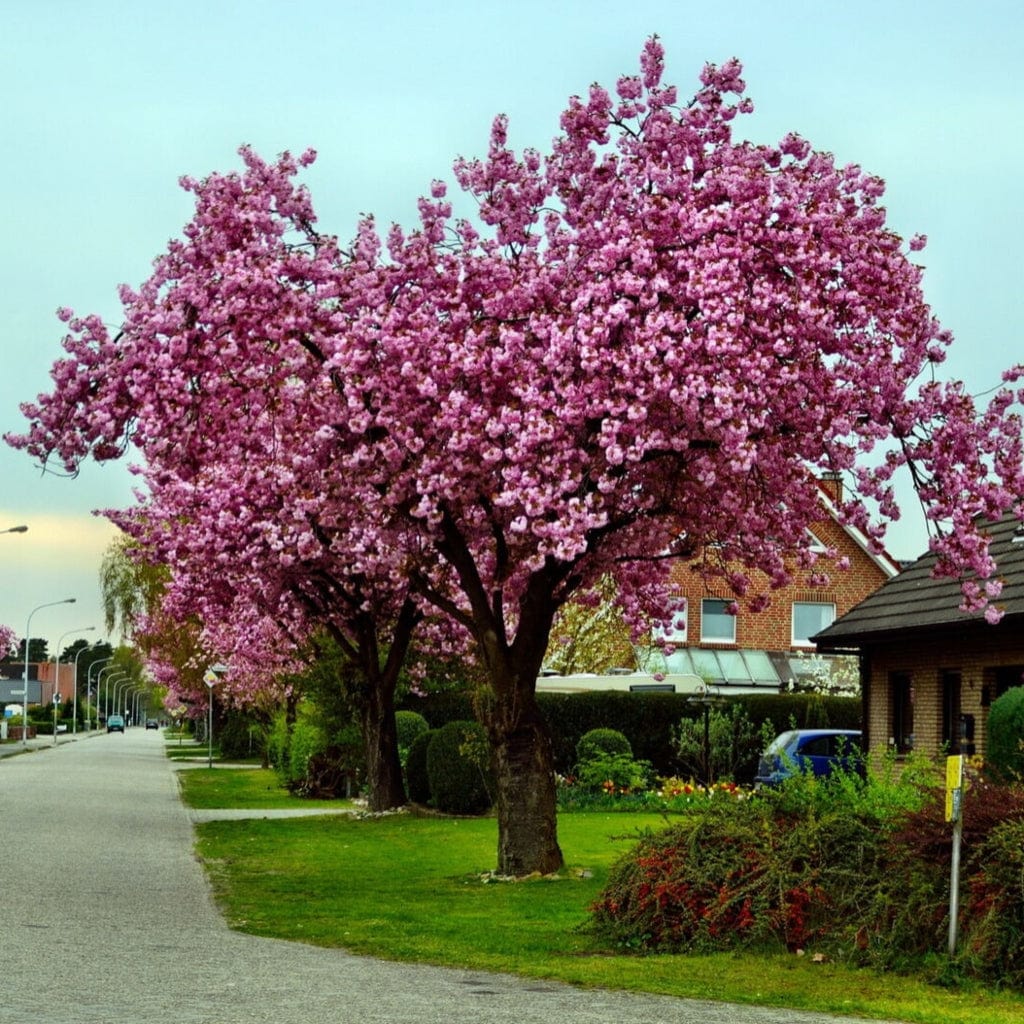Advice & Inspiration
Trees for Cities: The Best Urban Trees
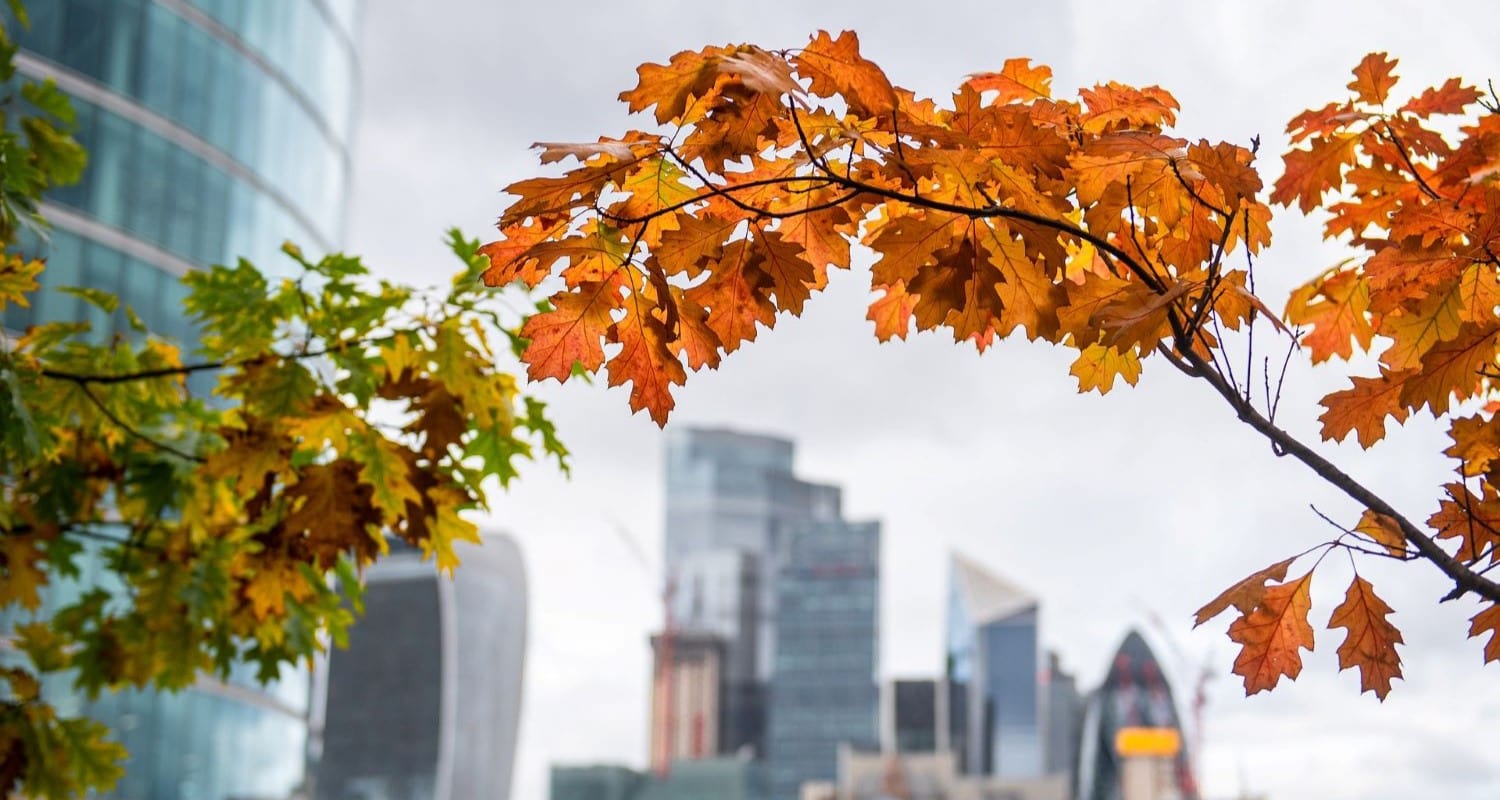
Living in a concrete jungle and yearning for more trees? You’re not alone. 80% of the UK’s population live in towns and cities, and we’re feeling increasingly tree-deprived.
Recent extreme weather conditions have proved that trees for cities aren’t just a nice-to-have, they’re essential for our welfare, shading our streets and absorbing flood water, as well as absorbing harmful emissions from the ever increasing traffic on our roads.
Jump to:
Why we need more urban trees
A city tree is not just the sum of its looks, although as Oscar Wilde said, what is beautiful is a joy for all seasons and a possession for all eternity. But city trees do much more for us than merely beautifying our streets.
Reducing pollution
Trees actively improve the air we breathe, as their leaves, bark and roots absorb pollutants including carbon monoxide, nitrogen dioxide, sulphur dioxide and particulate matter, as well as reducing carbon dioxide and through photosynthesis, releasing oxygen. This means that when you plant a row of trees or a hedge by a busy road, the trees are not only shielding you from breathing in these pollutants, but actively reducing them in the atmosphere.
Providing shade
In light of rising global temperatures (remember that 40°C day?) trees play a more vital role than ever in providing shade on our city streets. Unlike the tall buildings in countries which are designed for high temperatures and fitted with air conditioning, those in the UK are not built for extreme heat. The solution is to plant tall trees with wide spreading canopies to provide some much needed shade - it’s no coincidence that you’ll see tall, spreading trees lining the streets of cities like Paris, Rome and Madrid. The difference is noticeable - Research by Friends of the Earth found that trees in urban areas reduce the temperature on the ground by between 3-5°C. There are other benefits too, as shade trees reduce the need for air conditioning, along with the high electricity bills and CO2 emissions that it causes.
Preventing flooding
You’ll notice that when we have very heavy rain, it’s the surfaces with no greenery that flood most - one of the reasons why plastic grass is such a problem. As towns and cities have more hard landscaping, they’re particularly at risk from flooding and standing water. Trees are a huge help with this, as their leaves, stems and roots divert and absorb the water, in addition to their fallen leaves acting as a filter for pollution and improving our water supply.
Improving our mental health
You’re not imagining it - you really do feel better for being amongst trees and plants. When they’re few and far between, as in some cities, trees have an even greater uplifting effect on us. Don’t believe it? Try walking down a street lined with cherry blossoms as the flowers are falling. Trees create calm by softening traffic noise, replacing it with the gentle rustling of their leaves and birdsong, and screening ugly industrial architecture. They’re a reassuring presence in our neighbourhoods, bringing a sense of permanence through their links to the past and giving us a greater connection to nature. That’s even before you sit under one reading a book on your lunch break. Bliss!
Wildlife
Let’s not forget the other creatures who live in our cities. Blackbirds, foxes, moths and many more rely on urban trees for food and shelter. Squirrels, birds, mice and hedgehogs are the more visible end of the ecosystem supported by trees, but look closer and you’ll see a whole world of insects, mosses, lichens and fungi making their home on the mean streets.
And if they’re honest, urban foxes would far rather eat berries, worms and mice from around a tree than half a kebab dropped outside your local Popworld.

What are the best street trees?
Fired up to run out and plant a tree on a verge? Great idea, but hold that spade for a hot minute. You can maximise the benefits to nature, the environment and yourself by choosing the right tree. Check out our pick of the best city trees and choose the one that works for your needs and growing conditions, or even better, mix them up for better natural diversity and a wider range of benefits.
Best city trees for shade
Trees planted for shade will usually take years to reach their full size, so it’s an action for the long term but well worth doing, as this planet isn’t getting any cooler.
What you want from a shade tree is something that’s fast growing with a strong, single trunk, and a wide spreading canopy. Like these…
Oak
The broad, spreading crown and densely growing foliage of an English Oak tree make this instantly recognisable British classic one of the best for shade. As well as this, oak trees play well with others - their relatively shallow tap roots and excellent drought tolerance once established mean that they won’t deprive other trees and plants of water and nutrients.
Tulip tree
Whereas you’ll have to wait some years for an oak tree to develop that broad spread, tulip tree is one of the fastest growing trees you can plant. It can grow over 60cm every year, up to a cloud-busting 27m, with a canopy that can extend to 9-12m. As well as this, their green-yellow, tulip-shaped flowers are a glorious sight in summer.
Acer
Not those cute little acers you get in pots, but the Acer rubrum type, also called Canadian maples. They have quite a moderate growth rate at 30-60cm per year, but eventually reach 18m high with a canopy 9-13m wide. They also have some of the warmest and most vibrant autumn colour of any tree, so they make an excellent year-round street tree.
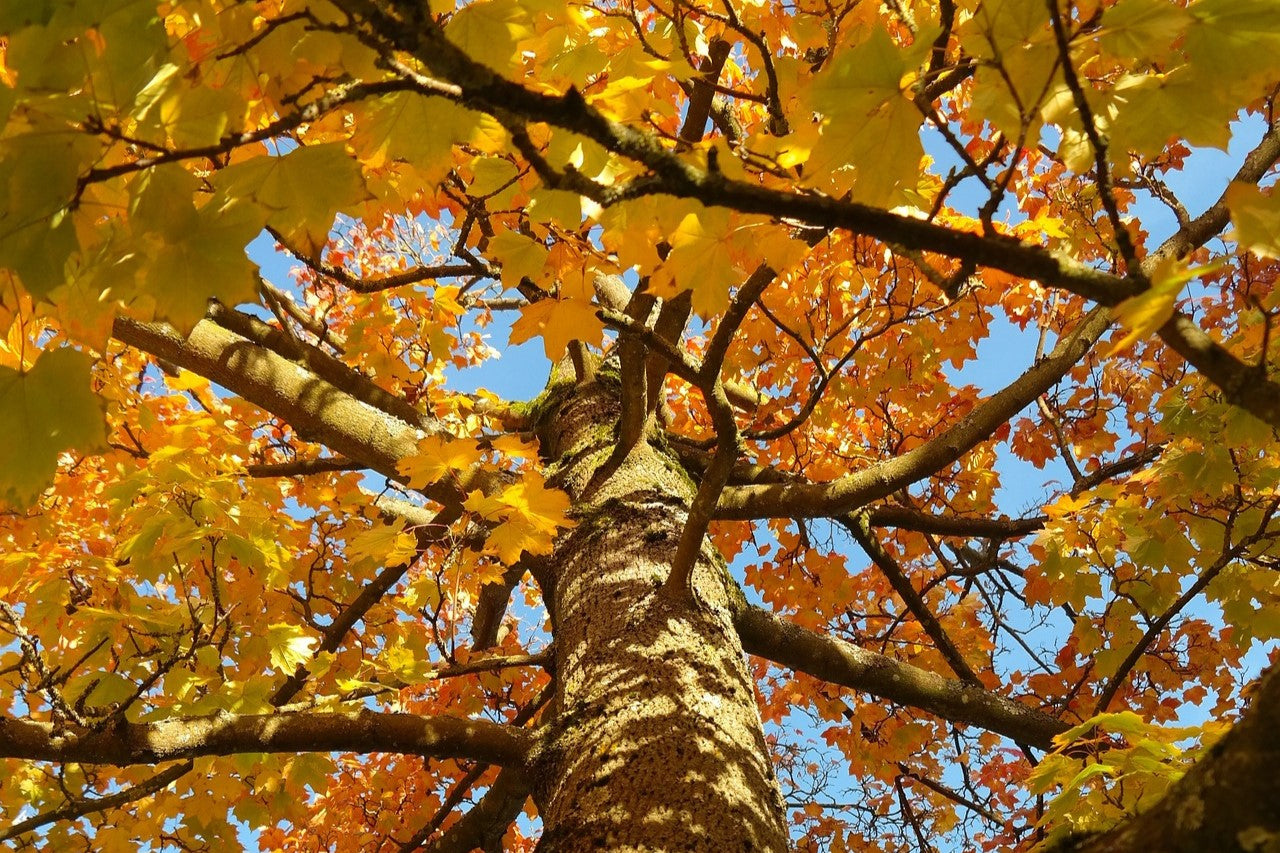
Other great trees for shading your street include Sycamore, Sweetgum, Catalpa and Cercis.
Best city trees to reduce pollution
Trees are masters of pollution control, selflessly absorbing our carbon and pollutants and giving us oxygen and clean air in return, so if you live or work on a traffic filled street or near industrial works, plant as many as you can. According to The Woodland Trust, these are the best trees for the job.
Willow
The great thing about willow trees is that there are so many different kinds, you’re bound to find one of a size, shape and appearance to suit your garden. The best trees to reduce pollution are the largest types, including the Crack Willow (no relation to the Crack Fox), Scarlet Willow and Goat Willow. The jury’s out on whether or not these trees are also good at reducing water pollution, as although they do seem to filter a lot of the nasty stuff out of wastewater, they’re also very thirsty trees and can deprive nearby plants of water and nutrients if they’re not regularly watered.
If the spreading form of a large, mature willow isn’t suitable for your space, a more compact choice would be a Flamingo Willow or Kilmarnock Weeping Willow. (Plus they won’t drink you out of house and home!)
Birch
Birch trees are brilliant at absorbing air and soil borne pollutants, which, combined with their slender, space-saving form, is the reason you’ll see so many of them in urban environments as well as in their native woodland. They tend to bear their branches higher up the trunk, leaving plenty of room for people to walk in the dappled shade beneath. Their ability to thrive in nutrient-poor soils also makes them a winner for city streets.
Lilac
This one was a surprise to me, but a very welcome one. As well as being one of the most pollution absorbing trees out there, lilac is a stand out flowering tree, doesn’t grow too tall and is blissfully fragrant. It’s why you’ll see so many lilac trees living their best lives in front gardens - they can easily be incorporated into a hedge, too.

More trees that win at absorbing pollution include yew, callery pear, acer campestre, sycamore, hornbeam, walnut and English oak.
Best city trees for wildlife
The best trees for city wildlife are those which support a wide range of species in each season while being resistant to harsh weather conditions, drought and poor air quality. Our top picks are all UK native or long established trees which makes them more compatible with the wildlife you’ll find here, but also attractive to migrating birds from other countries and newer additions to our urban wildlife like the London parakeets! Choose any of these to bring the birdsong back to the high street.
Silver Birch
Super-resilient Silver Birch is a bit of a city wildlife haven, providing food and homes to more than 300 insect species. The leaves are a favourite source of food for aphids, which are in turn eaten by ladybirds and other species further up the food chain. Woodpeckers and other hole-nesting birds often nest in the trunk, while the seeds are eaten by birds such as siskins and greenfinches.
Rowan
When planted outside a house, rowan trees are traditionally said to protect against evil. In days gone by that meant witches, spirits and the devil, but now we can add carbon monoxide, carbon dioxide and other fossil fuel based horrors to the list, as rowans are extremely pollution tolerant. A rowan is an essential tree for wildlife watchers, with bee and beetle friendly blossom in spring, moths and their caterpillars munching on the summer leaves, then birds flocking to sample the brightly coloured berries from autumn onwards (and that’s not all).
Crabapple
Often overlooked in favour of showier, larger trees, a crabapple is the ideal wildlife tree for smaller gardens. As a UK native tree, it’s highly popular with garden creatures, with bees, butterflies and hoverflies attracted by the spring flowers and birds and small mammals getting important winter food supplies from the crabapples.
Crabapples will even fertilise other apple trees, giving you a bigger crop from your Bramleys or Braeburns. See which one is best for your garden.

Other great city trees for wildlife include yew, ornamental pear, oak and hawthorn.
Best city trees for small spaces
With increasingly built up city centres, it can sometimes be hard to fit in a full sized tree. Don’t be defeated - there are plenty of naturally compact or specially bred trees that will grow happily in a small space. Here’s some of the best.
Crabapple
Cute, compact crabapples - they fit neatly in a border, small bed or even a pot, and have a blossom display to rival even flowering cherries. Fantastic for wildlife, pollution tolerant and extremely hardy, these tough little trees are an all year round feature for any size of garden. The largest of them will only reach 4m x 4m in size, and they can be pruned to keep them smaller. Those warm autumn colours will also give you a mood boost when the nights are drawing in.
Ornamental Pear
Ornamental, or Callery pear trees are naturally slender in form and thrive in nutrient-poor, polluted conditions, making them ideal for roadside, front garden or city street planting. Their early spring blossom is a treat for pollinators, and their leaves turn to autumn shades later than most, extending your garden’s seasonal colour.
Flagpole Cherry Blossom
Flagpole, or columnar cherry blossoms, are the ideal solution for a narrow space as they grow as tall as a regular flowering cherry, with just as much blossom, but stay at a very slender 1m width without pruning. Plant one in a tight gap or several in a row for a beautiful alternative to a hedge which will attract pollinators and give you a spectacular spring display of pink or white flowers.

You can find more suggestions in our guide to trees for small spaces.
Best city trees for tough conditions
Life can be tough in the big city, especially if you’re a tree. Dry weather (with no one to water them), poor soil quality, confined space for their roots and heavy pollution can all take a toll. If you’re planting a tree in less than perfect conditions, these are the tough guys to go for.
Ginkgo Biloba
When I say that Ginkgo Biloba is tough, I mean the species has survived 200 million years of ice ages, mass extinctions and atomic warfare, so it should do OK in your city garden.
With little about it thought to have changed in all those years, Ginkgo is known as ‘the living fossil’. It has uniquely fan-shaped leaves which turn golden yellow in autumn before dropping all at once! Naturally, Ginkgo Biloba laughs at heat, cold, drought and pollution and will tolerate most soils. Find out more Ginkgo facts in our nerdy feature.
Sweetgum
Plant your sweetgum tree in any soil except lime or chalk, water it for the first year or so then stand back and let it do its thing - namely, juggling being one of the world’s most beautiful trees (there’s nothing like it for autumn colour - think purple, red and gold) with being ridiculously undemanding. You don’t even need to prune it. At a mature height of 20m+ after fifty years, it’s a street tree for the long haul, but also makes a lovely garden tree.
Tilia cordata
There’s only one thing a Small Leaved Lime Tree doesn’t cope with, and that’s salt. Bad news for those on the coast, but for the rest of us, Tilia cordata is a perfect urban tree. It’s fine with heat, frost, light shade and most soil types. It’s also wind resistant, so a lime hedge is one of the best choices for windswept city centres. Tilia is at its best in spring, when it’s covered in sweet scented white flowers, and being a UK native species, it’s highly beneficial to a variety of wildlife.
Ornamental Pear
As I’ve mentioned above, Ornamental Pear is a star tree for pollution-heavy spots. It’s also frost, heat and wind resistant. But perhaps the ultimate proof of its resilience is that the famed ‘Survivor Tree’, found still growing in the wreckage of the World Trade Center after 9/11, was a callery pear. You can read more about it in our article.

Best city trees for mental health
If your main goal is to improve the wellbeing of your fellow city dwellers, then a beautiful flowering tree is a good choice, especially if the blossom is scented. Consider also what the tree will look like at different times of year - a bright autumn display is a welcome mood boost when the nights draw in, and some trees, like rowans, provide year-round eye candy.
Cherry blossom trees
Probably the most photographed trees ever, cherry blossoms pull focus from all the other plants in April and May, when they’re covered in huge clusters of pink and/or white fragrant blossom. It’s not just a sight to see though, but a shared cultural experience, with the traditional Hanami events in Japan (and why not join in here in the UK?).
Cherry blossom trees have wonderful autumn foliage colours, and there are even cherry blossoms that bloom in autumn and winter, so you don’t have to put away the camera for too long.
Hawthorn trees
There’s always something happening with a hawthorn tree, and it can usually be filed under ‘life affirming’. Hawthorns have one of the best floral displays of any tree, and since it’s a British native species, you can guarantee that within weeks of planting, your tree will be teeming with life in all its wild glory. Get the camera and the identification guide out, because there are over 150 different insect species to spot, including bees, butterflies, beetles and moths. Birds (including countryside visitors like fieldfares and redwings) will also come to hawthorns for a city break, keen to sample their enticing red haws in the autumn.
And if you’re into that sort of thing, after enough years have passed, your hawthorn tree will be broad enough to hug.
Fruit trees
Planting fruit trees in an urban space has huge health benefits, not only in terms of upping your fruit consumption, but in bringing people together to share the crops and look after the trees, increasing your area’s sense of community and reducing feelings of isolation. Apple and pear trees are the hardiest and they’re also some of the quickest to produce fruit - check out the GROWE Community Orchard in Greater Manchester for inspiration.
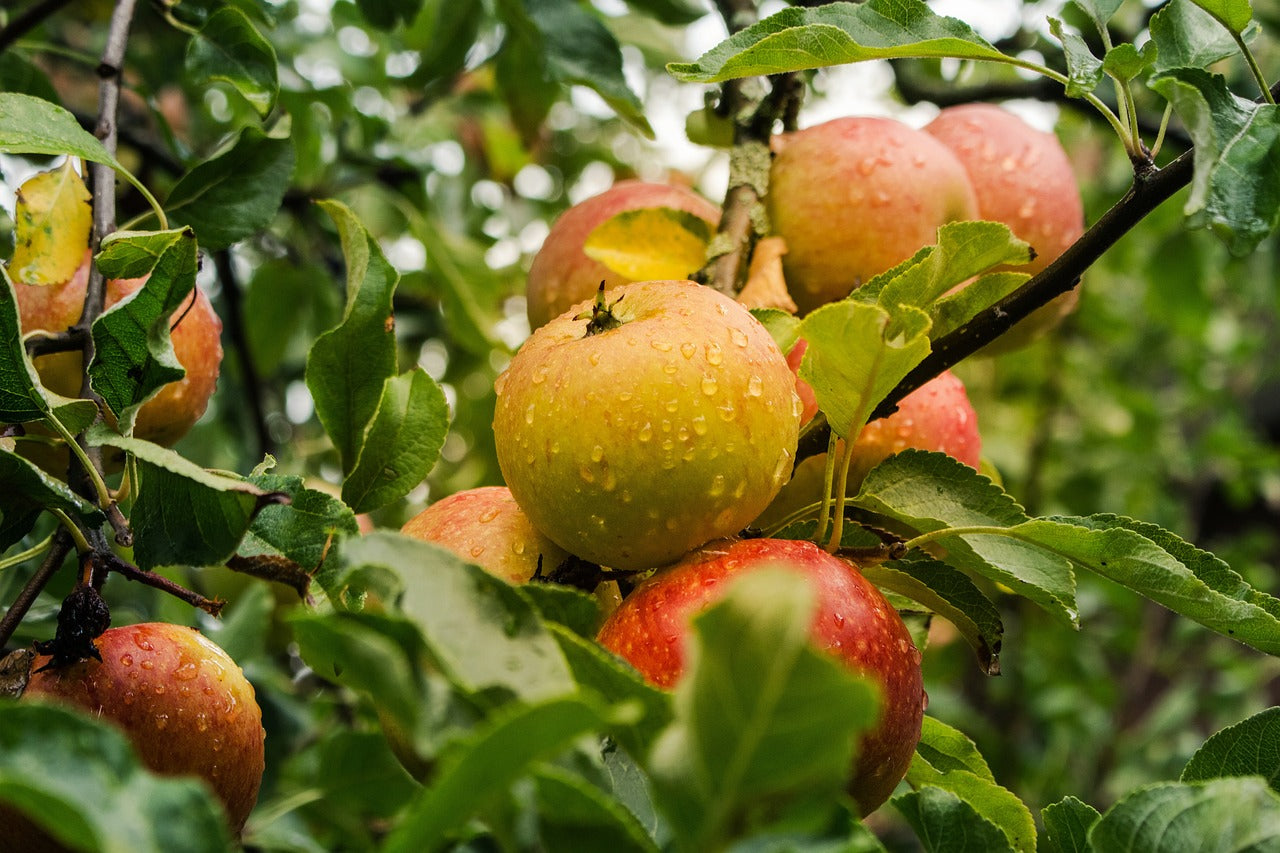
Things to consider
Before you get carried away and dig up half of Hull, there are a few things to bear in mind when planting urban trees that you might not need to think about in your own garden or in a wide open space. Think about how big the tree will eventually grow: you don’t want the roots spreading out so far that they crack roads and pavements, or damage someone else’s house. Consider also where the leaves of deciduous trees will fall. People tend to get a bit shirty if that happens to be right outside their swanky shop front, and as for wildlife trees, you may want to avoid them overhanging any car parking spaces, because no-one loves having their Porsche ‘decorated’ by pigeons.
In general, try not to plant your tree too close to buildings or on land that someone else owns - it’ll only end in tears (yours) and lumberjacking (theirs). On the other hand, they might be happy for you to enhance their environment and give you the go ahead - it can’t hurt to ask.
How to help
You can help to increase the number of trees in our towns and cities by planting them in your garden (if you live in the city centre) or teaming up with neighbours and planting them in your street (ask the council first - some of them even have schemes you can apply to and get free trees). Write to your MP and council to ask what they’re doing to increase urban planting - they might not be aware of how important it is.
Finally, you can help by looking after existing trees in your neighbourhood - water them when it’s hot and dry, and look out for any signs of vandalism or disease that might affect them. There are some useful links below.
Useful links
- Further info about the benefits of city trees: Benefits of Trees Outside Woods - Woodland Trust
- Find a tree planting scheme: Free Trees for Schools and Communities - Woodland Trust
- Donate or volunteer for a tree charity: Trees for Cities | Trees for Cities
- Contact your MP: Contact your MP - UK Parliament
- Report tree damage to your council: Find your local council - GOV.UK (www.gov.uk)
- More urban planting inspiration: Urban Garden Ideas | Roots Plants
